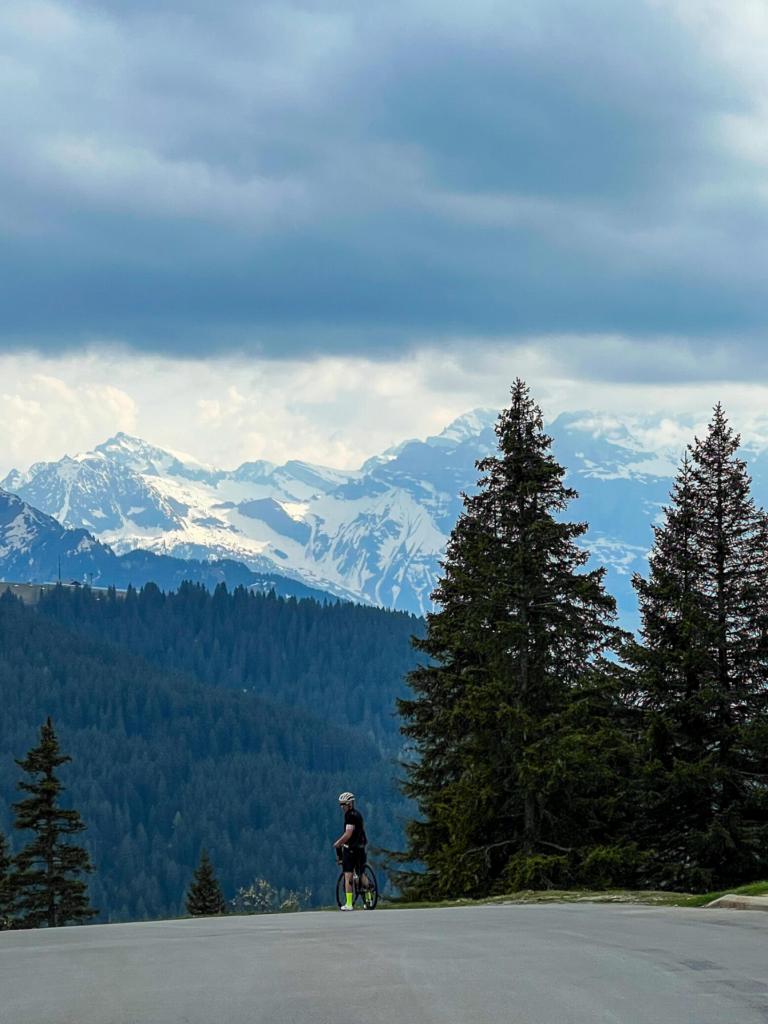
The Grand Départ is scheduled for 1 July, but the preparations for this year’s Tour de France started more than 400 million years ago, when the rocks of the Central Massif and the Vosges Mountains were formed. Behind every climb, descent, or flat stage is a geological reason, and the team behind Geo-Sports.org explains the geology that created the race parcours. In addition to their usual blogs, this year the team will also use short videos recorded on location. The site Geo-Sports.org will describe the natural decor of each stage of the Tour de France: the various landscapes and the treasures that are found below the surface, for both the men’s and the women’s races. During this year's Tour de France Femmes, the team will pay special attention to female pioneers in the development of Earth science.
Shoe size of dinosaurs
'Even more than other sporting events, a cycling race is also an event where you can marvel at the surroundings.' Speaks Douwe van Hinsbergen, geology professor at Utrecht University and cycling fanatic. 'Together with fellow earth scientists from the Netherlands and abroad, I therefore decided to share our knowledge about landscapes and the underlying geological treasures with the public, in an accessible way.'
Among them are also five Utrecht colleagues of Van Hinsbergen. For example, paleontologist Anne Schulp talks about the shoe size of dinosaurs, Francien Peterse explains the origin of the soils under French vineyards, Arwen Deuss explains why the polka dot jersey should actually be red and green, Emilia Jarochowska delves into mass extinctions of 400 million years ago and tells Alissa Kotowski why rocks are even more stressed than a platoon in full sprint.
Swiss cheese and clean laundry
This year, the Tour de France will once again race through the varied landscapes of France, and also northern Spain. To name just a few: the Swiss cheese of the Basque Country hills, a volcano that was once Europe’s largest in the Auvergne, rocks folded like a pile of clean laundry in the Alps, and a series of dinosaur tracks in the Jura. If you are curious how these phenomena were created, how you can recognise them, and how they affect our lives today, then take a look at Geo-Sports.org and the linked social media channels.
Blogsand videos
With cycling commentator José Been as Editor-in-Chief, the team behind Geo-Sports.org has now expanded last year’s pilot project with more blogs, more information, and videos with explanations, which are all free to use by the media. Utrecht University geologist Marjolein Naudé will host three videos for the Tour de France Femmes, and her colleague Douwe van Hinsbergen will do the same for the men’s Tour, for a total of nine videos. They will also co-host one video together. The videos will be used by television broadcasters during their live stage reports and at the end of the relevant stage, they will be posted to YouTube and the Geo-Sports.org social media channels.
“The audience can also share photos and ask questions on Twitter and Instagram via the hashtag #GeoTdF”, adds Van Hinsbergen. “And during the Tour, we’ll provide daily commentary via our Twitter account @geotdf.” Fans can also follow Geo-Sports via other social media channels (https://linktr.ee/geosports).
12 countries, 4 continents
Geo-Sports.org is an initiative by Utrecht University and the Naturalis Biodiversity Center, both in the Netherlands. Thirty researchers from 25 different institutes in 12 countries on 4 continents participated in the project.
The website is in English, French, German, Dutch, Spanish, Italian and several other languages.
More informationnot for publication
Prof. Douwe van Hinsbergen, D.J.J.vanHinsbergen@uu.nl, +31 (0)6 27 28 37 19
Or Stephan van Meulebrouck, Press Spokesperson, Utrecht University Faculty of Geosciences, S.H.J.vanMeulebrouck@uu.nl +31 (0)6 23 60 43 83
Cycling reporters who would like a summary of the blogs to prepare their reports can send an e-mail to S.H.J.vanMeulebrouck@uu.nl to request a PDF.